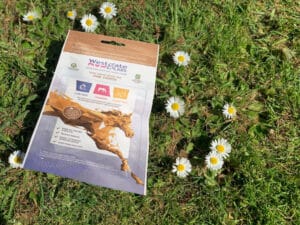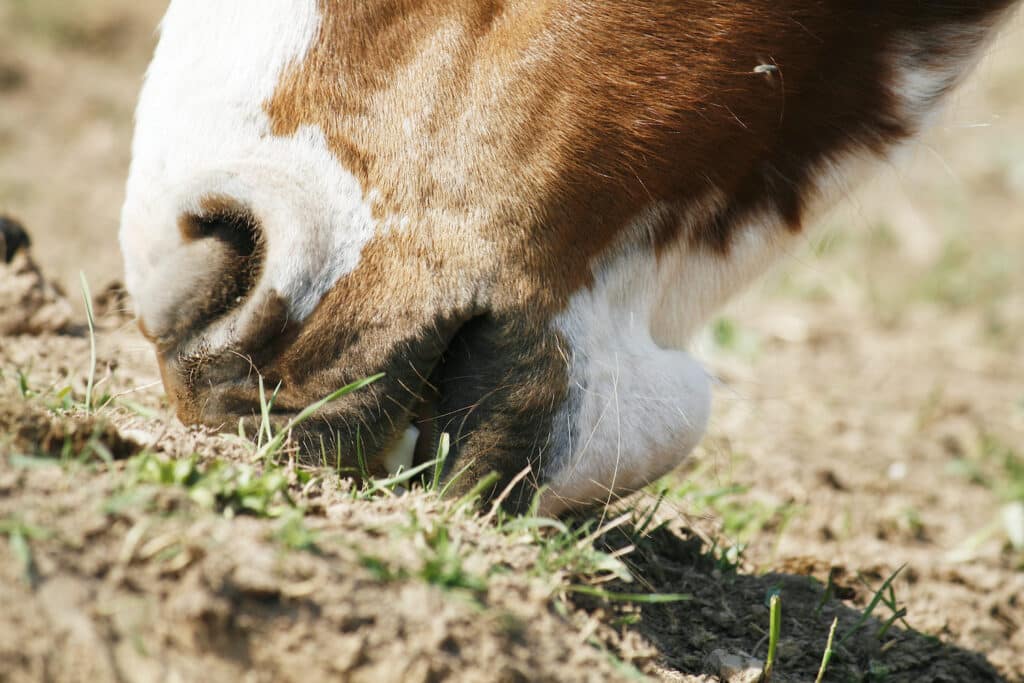Colic, Veterinary
Sand colic in horses
Carolyn Cummins MVB Phd MRCVS, consultant vet to Westgate Labs explains what happens when a horse ingests sand
Sand is a relatively common cause of colic in horses in certain parts of the country. Animals ingest it as they graze and it can accumulate in the colon over time. Here it irritates the gut lining and, in sufficient quantity, also has the ability to cause impaction of the gut which, if not treated in time, can be fatal. Many horses with sand colic have intermittent mild colics over periods of weeks or months before building up to a more severe episode.
Always call your vet if you suspect colic
Classic colic signs; Mild depression and inappetance. Pawing, rolling, flank watching, getting up and down, standing as if to urinate or thrashing. Horses with sand colic may also have had diarrhoea before the onset of the symptoms.
Sand testing
Horses presenting with sand colic usually have a history of grazing on sandy soils, overgrazing paddocks or being fed in a ménage. For equines in these risk categories a faecal sample can be taken at intervals through the year and checked for sand to assess the levels in the gut. This is done by dissolving dung in water and observing the amount of sediment that settles in the sample overnight.
Results
Test results from Westgate are expressed as a percentage to give a quantitative measure of the level found. While it’s not desirable to find any sand in faeces, some healthy horses are not affected by a small amount. For this reason positive tests should be discussed with your vet on a case by case basis. Together you can determine whether other symptoms such as diarrhoea/colic are also present and devise an appropriate management and/or treatment protocol.
For this reason positive tests should be discussed with your vet on a case by case basis. Together you can determine whether other symptoms such as diarrhoea/colic are also present and devise an appropriate management and/or treatment protocol.
With the variables of gut movement it is possible for the test to generate a false negative showing no sand in the faeces of horses that are carrying a burden. For this reason we include two kits; if no sand is detected in the first sample take a second a few days later. If sand is detected in the first test then the second can be used to retest the horse following management adjustments. Abdominal ultrasound and X-rays be used to detect sand in the gut, although X-rays may not be easy in larger horses and require a powerful machine.
Treatment
Conservative treatment is usually successful if started early. Horses are given oral laxatives such as psyllium, with or without magnesium sulphate (Epsom salts), orally. The psyllium is believed to work by increasing the gut motility and clumping the sand together so that it is easier to pass. For active colics your vet may also provide anti-spasmodics and pain relief to make your horse more comfortable.
Sand can also damage the lining of the gut making it more “leaky” and allowing toxins to cross into the bloodstream. For this reason, your vet may also put your horse on a course of antibiotics. Horses that don’t respond to medical treatment may require surgery.
Prevention
Ideally the management of horses should be aimed at preventing the risk of sand colic. This is especially relevant if you live in a sandy soil area:
Don’t feed horses off the ground. Use large, high sided tubs and place on rubber matting so that horses don’t pick up sand when scavenging for dropped feed. Hay should also be fed in nets, again over rubber matting.
Avoid overgrazing pastures. Horses are more likely to pick up sand if the grass is short or sparse, forcing them to graze too close to the ground.
Feed psyllium to high risk horses. There are a number of proprietary products on the market which are designed for feeding to horses or alternatively feed the straight herb – either 250g once a day for one week every month or 250g one day a week.
Avoid daily treatment as this can damage the gut flora, limit the nutrients your horse can absorb from their feed and can become less effective over time as the body becomes overused to it.
While not every horse on sandy soil needs prophylactic treatment with psyllium, this may be of benefit to horses showing intermittent mild colics and who have high levels of sand in the faecal float test. Provide access to a salt block. If horses are lacking in salt, they may attempt to eat soil. Supply ad-lib hay.
A diet high in forage can assist in clearing any ingested sand. A recent study in the University of Florida compared four means of sand removal from the horses gut.
1. Hay fed at 1.5% of body weight
2. Hay fed at 2.5% of body weight,
3. Hay fed at 1.5% of body weight plus psyllium fed in a single daily dose
4. Hay fed at 1.5% of body weight with psyllium fed twice daily. It was found that the best results and most sand cleared were with hay fed at 2.5% bodyweight.
Case Study – how sand testing helped Sophie return to health
Sophie arrived with her current owner in poor condition. She had been grazing coastal pasture, was underweight and generally in poor health. Blood test results from her vet suggested she was suffering from sand colitis. Sophie’s sand colic test results Not long after the vet’s diagnosis in May 2019 we received a sample from Sophie for laboratory analysis. A sedimentation test revealed a 7% sand burden in her faeces. Following the results Sophie was moved to different pasture and began a diet supplemented by large amounts of dry forage. This not only helped her gain condition but also served to push any intestinal sand deposits through her digestive system.
Sophie was retested six months later in November 2019 and to the relief of everyone returned a sediment level of <1% sand in her faecal sample. She is now glowing, and a picture of health.
Where do we think the sand came from?
Sophie was previously grazing mountains in a coastal region, the pasture was sandy and we suspect this is where she collected the sand in her digestive system.
What happens next?
The next step for Sophie is to retest in 3 months’ time to see what the level of sand is, if it continues to remain at <1% that’s fantastic – we would look at decreasing the frequency of testing over the wet winter months. However if it increases again, we would suggest treating with Psyllium and retesting a week after the treatment ends and to continue to monitor closely.


